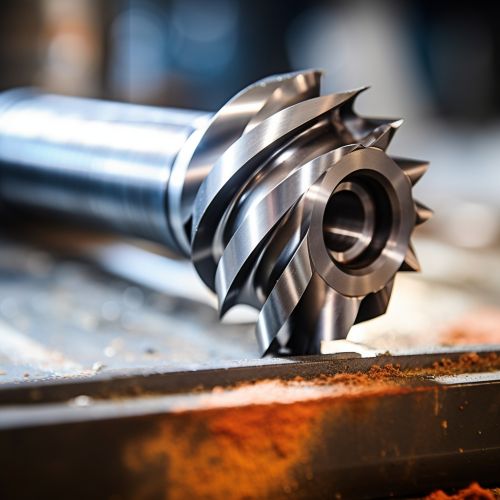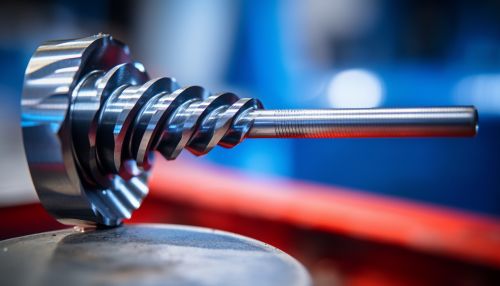Auger (drill)
Introduction
An auger is a drilling device, or drill bit, that usually includes a rotating helical screw blade called a 'flighting' to act as a screw conveyor to remove the drilled out material. The rotation of the blade causes the material to move out of the hole being drilled.
History
The auger has been around since ancient times. It was used by the Greeks and Romans for drilling holes in wood, stone and other materials. The auger was also used in the Middle Ages for drilling holes in the construction of buildings and fortifications.
Design and Operation
An auger uses a rotating helical screw blade to move material from the bottom of a hole to the surface. The rotation of the blade causes the material to be pushed up the shaft of the auger, allowing for continuous drilling without the need to remove the auger from the hole. This makes the auger an efficient tool for drilling deep holes.


The design of the auger can vary depending on the material it is intended to drill. For example, an auger used for drilling in soft soil will have a different design than an auger used for drilling in hard rock. The size of the auger can also vary, with some augers being small enough to be used by hand, while others are large enough to be attached to a machine.
Types of Augers
There are several types of augers, each designed for a specific type of drilling. These include:
- Hand Augers: These are small augers that can be operated by hand. They are typically used for drilling small holes in soft materials like soil or wood.
- Machine Augers: These are larger augers that are attached to a machine. They are used for drilling large holes in hard materials like rock or concrete.
- Earth Augers: These are used for drilling holes in the earth for purposes such as soil sampling or the installation of fence posts.
- Ice Augers: These are used for drilling holes in ice, typically for ice fishing.
- Wood Augers: These are used for drilling holes in wood. They are typically used in woodworking and carpentry.
Applications
Augers are used in a wide variety of applications. They are commonly used in construction, agriculture, and drilling industries. In construction, they are used for drilling holes for foundations, pilings, and utility poles. In agriculture, they are used for soil sampling and drilling holes for fence posts. In the drilling industry, they are used for drilling holes for oil and gas exploration and production.
Advantages and Disadvantages
Like any tool, augers have their advantages and disadvantages. One of the main advantages of an auger is its efficiency. Because the auger removes material as it drills, it can drill deep holes without the need to be removed from the hole. This makes it an efficient tool for drilling deep holes.
However, augers also have their disadvantages. One of the main disadvantages of an auger is that it can be difficult to control. Because the auger is rotating, it can be difficult to keep the auger straight, especially when drilling in hard materials. This can result in holes that are not straight, which can be a problem in some applications.
